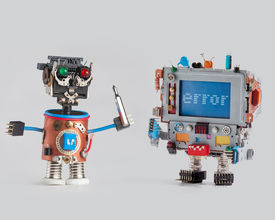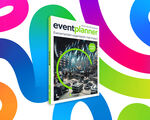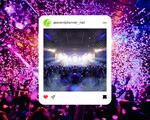Event planners have a misconstrued idea about what an event webpage should look like. Many believe that creating a webpage is merely publishing event information and letting the attendees sort it out and decide what's relevant on their own. Others think that designing a powerful webpage isn't a huge priority.
Only a few manage to actually build attractive webpages, and in doing so, they strengthen their event communication and provide a pleasant online experience for their (potential) attendees.
As eventplanner.tv founder Kevin Van der Straeten notes in his book EVENTS, "It goes without saying that the website must be professional in appearance and that its style, tone and content must reflect the objectives of the event and the expectations of your target group."
Why?
First, a powerful event webpage acts as a promotional tool. By adding the right calls to action or accurately describing the benefits of your event, you'll achieve a higher attendance rate.
Second, as Kevin highlights, "the most important reason for investing in an event webpage is the registration module. This allows visitors to your site to register for your event in a quick and easy manner, whilst at the same time automatically uploading all their details into your database."
Third, if done correctly, event websites encompass all the means to provide efficient and easy communication with your attendees. Building a good event webpage requires certain skills and knowledge. Don't panic: you don't need to know HTML or have advanced computer programming skills to craft a powerful, engaging site. You simply need to be aware of (and avoid) certain errors. To help you with that, we put together a list of mistakes to avoid when setting up an event page:
Mistake #1. Transforming information into clutter
Let's say that you have tons of event-related information that you want to share with your (potential) attendees. Your first instinct is probably to cram your webpage with data and present it as something carefully planned and structured.
However, the more you overwhelm your visitors (event guests) with different layers of information, the greater the chances are they'll feel confused or bored. Provide your site visitors with essential information (the dates, venue, program, social activities, fees, attendance requirements, speakers, sponsors, and the CTA (call to action) and avoid diluting the event-related message.
Mistake #2. Making certain data hard to find
Think about the last event webpage you built (or saw). How many clicks did (potential) attendees have to make to obtain the basic information they needed? Did they have to click four or five times just to reach the registration or event program page? Most people won’t bother trying to find it; instead, they'll likely give up quickly and abandon the site without remorse. When building an event site, always remember to make information easily accessible, so your visitors won’t have go on a scavenger hunt.
Mistake #3. Ignoring the power of design
According to a research study, "A website’s first impression is known to be a crucial moment for capturing the users' interest. Within a fraction of time, people build a first visceral 'gut feeling' that helps them to decide whether they are going to stay at this place or continue surfing to other sites." As the study suggests, the more familiar a webpage looks (no weird options or unconventional layouts), the more appealing it is to visitors. Considering this, when creating an event site, don’t ignore the visual aspect and focus on providing a pleasant, yet familiar web design.
Mistake #4. Not giving enough (or any) details
Always think about your attendees. Do they know where the venue is and which sessions require additional registration or payment? Are they aware of the new program updates? Are the activities described thoroughly? Are you sure your webpage is covering essential information and addresses any questions your attendees may have? Always remember that your webpage must provide all the necessary details up front to make the information as comprehensible as possible.
Mistake #5. Providing a weak call to action (CTA)
How do you usually attract more attendees on your webpage? Are you just asking them to click Register, and that's it? If so, think twice! When ignoring the CTA button message, you run the risk of having a low attendance rate.
As world-famous bestselling author Neil Patel argues, "One of the main reasons why most landing pages and sales pages are not converting leads into customers is a weak call to action with no sense of urgency." The main purpose of your event’s landing page should lead to this one action (such as register or submit the registration form) by encouraging people to click on the CTA button. So avoid weak CTA texts and focus on creating a conquering CTA message.
Final thoughts
With so many digital tools readily available, creating an event page is easy. However, building a truly powerful and efficient event webpage requires knowledge and skills. To harness the potential of your event site, make it clear, familiar, and simple. Avoid cluttering your webpage with too much information, but make sure to provide all the necessary details to avoid any questions your (potential) attendees may have. Finally, focus on creating a powerful CTA that will persuade people to register and attend your event.









Great artilce! I completely agree with these points. We are an event tech company and having worked with a large number of clients,it is safe to say that one of the most common mistakes that planners make is to get overwhelmed by the vast number of features they can include. They either provide too many details or don't provide enough. Apart from this, planners also tend to get influenced by websites they see and try to replicate them as is. A lot of visual appeal is often lost in replicating. You can take inspiration, yes, but it is important to have an original design.